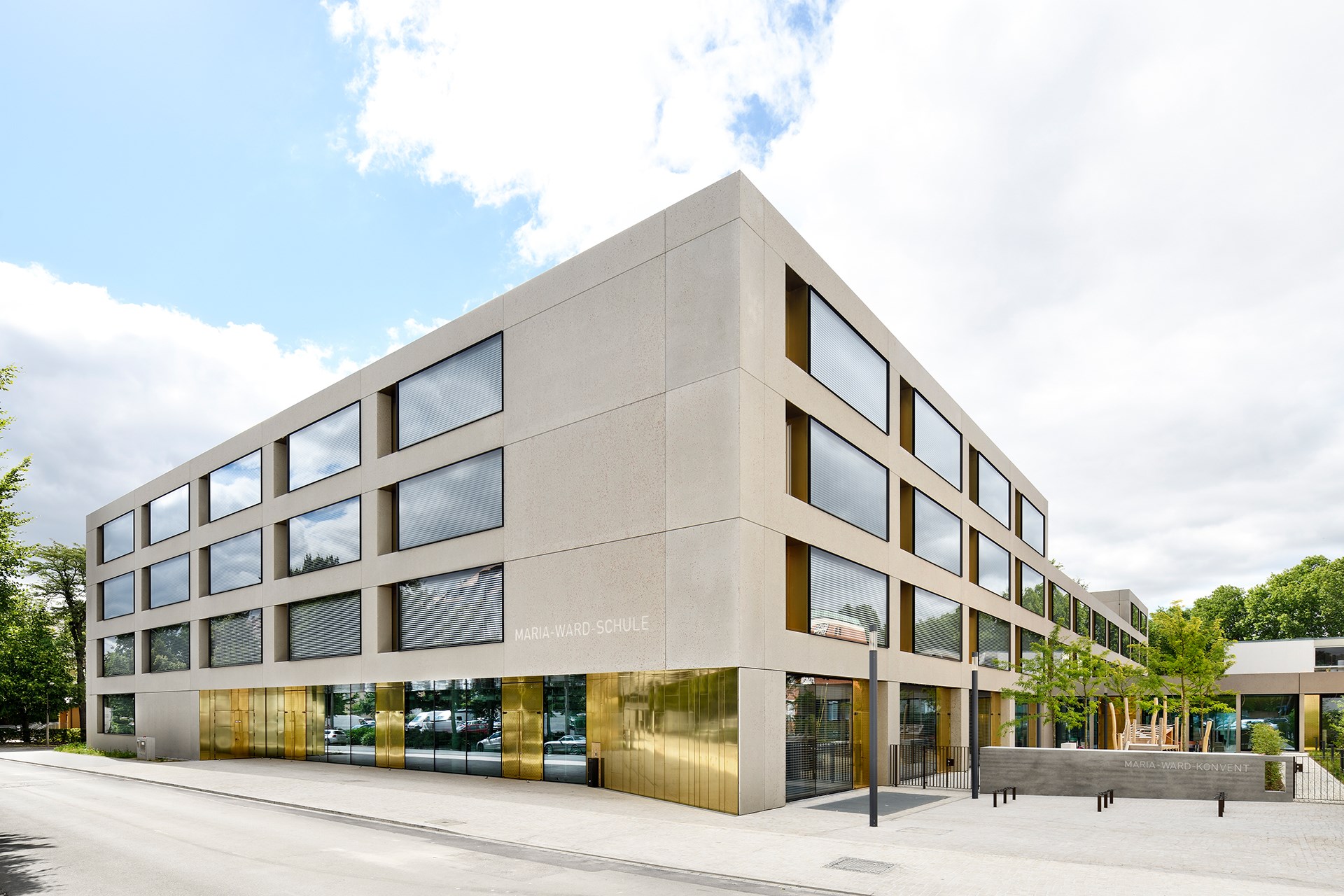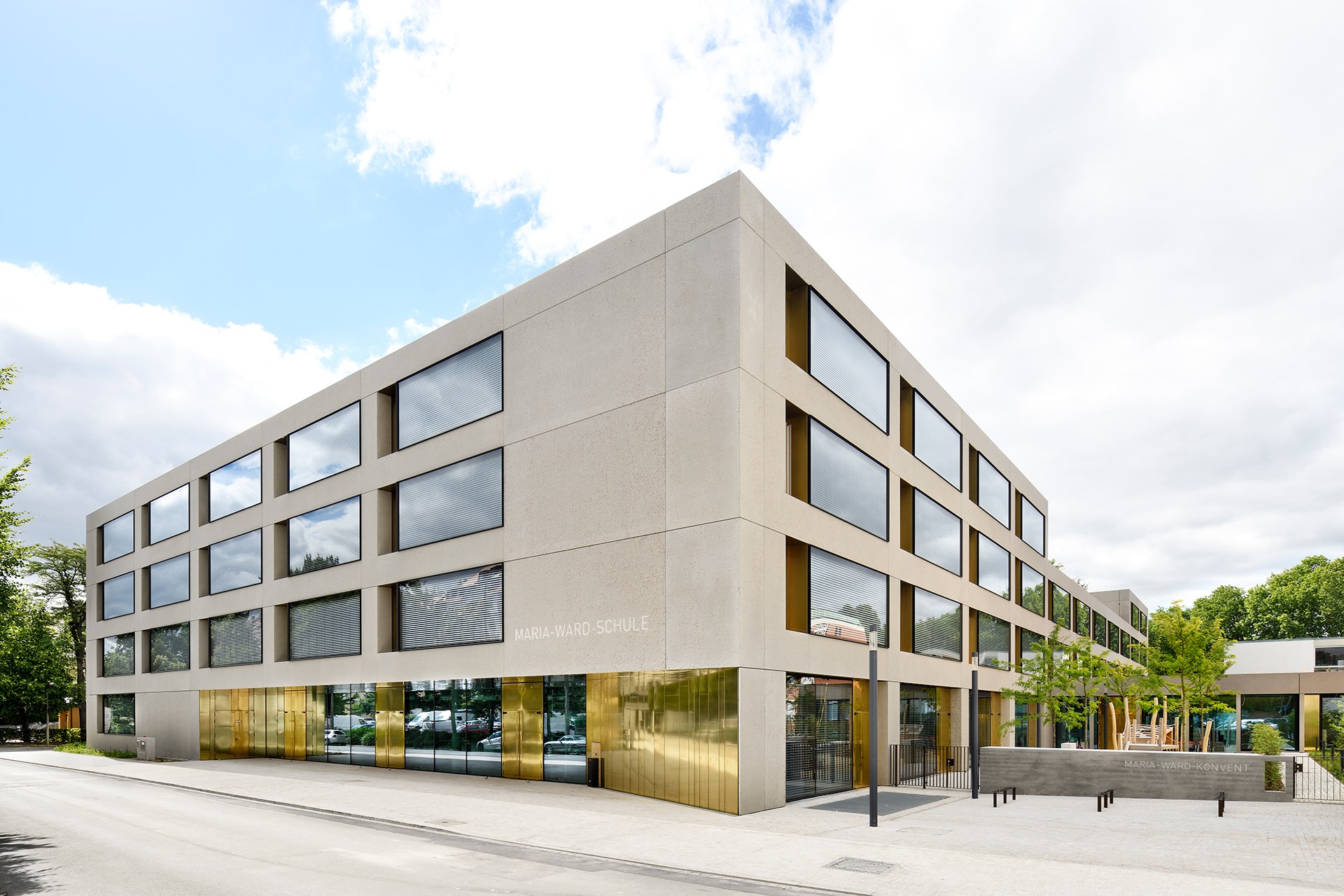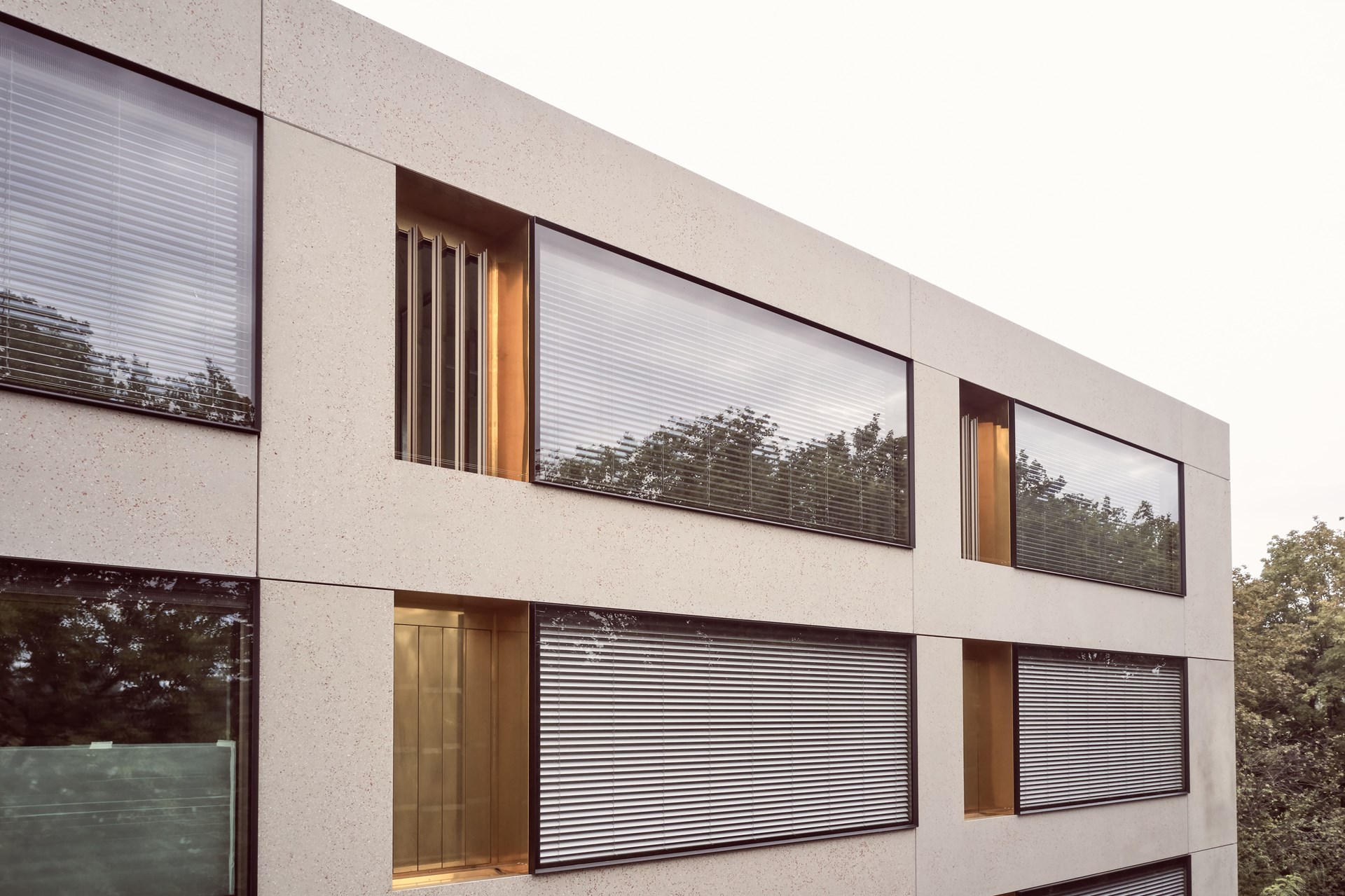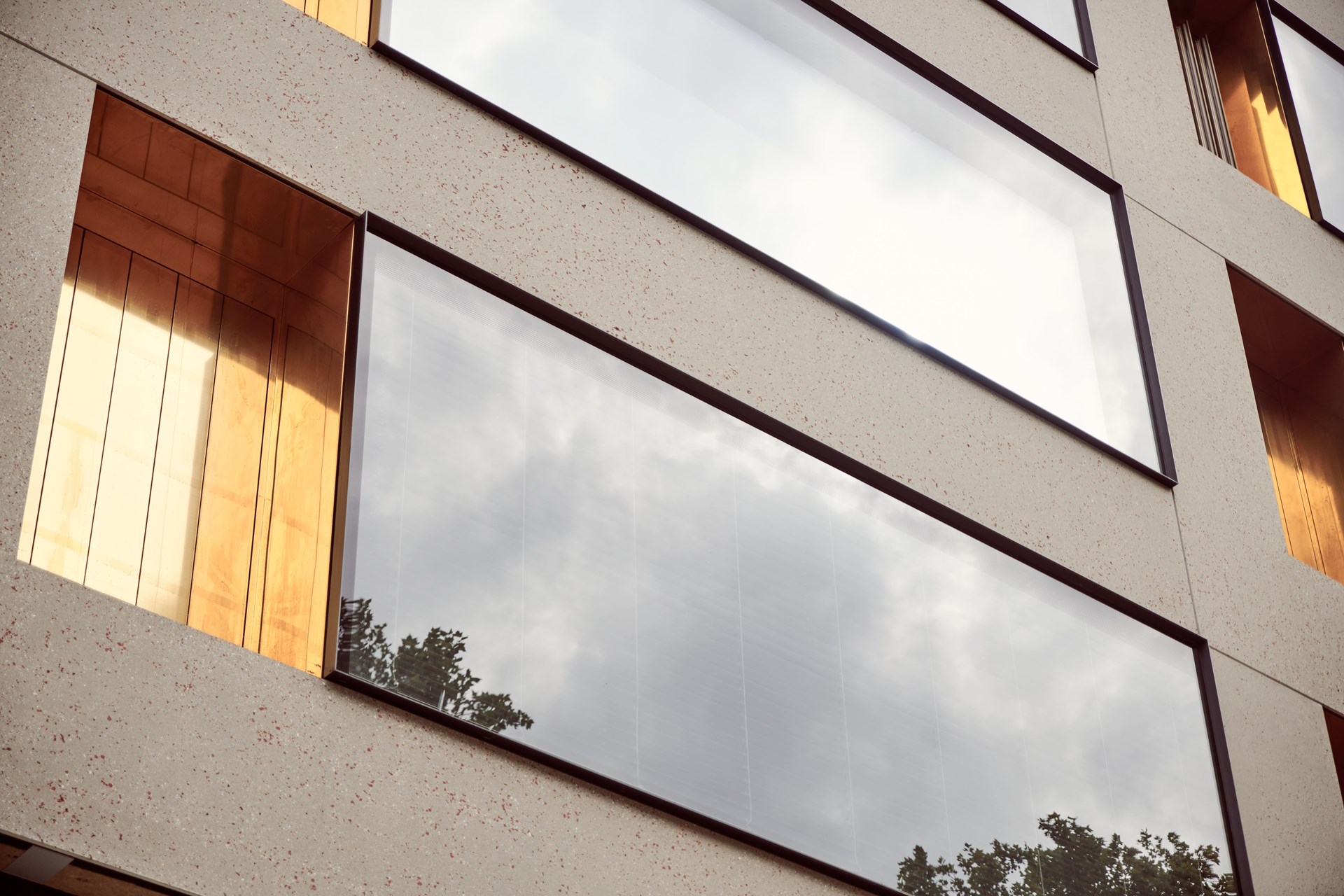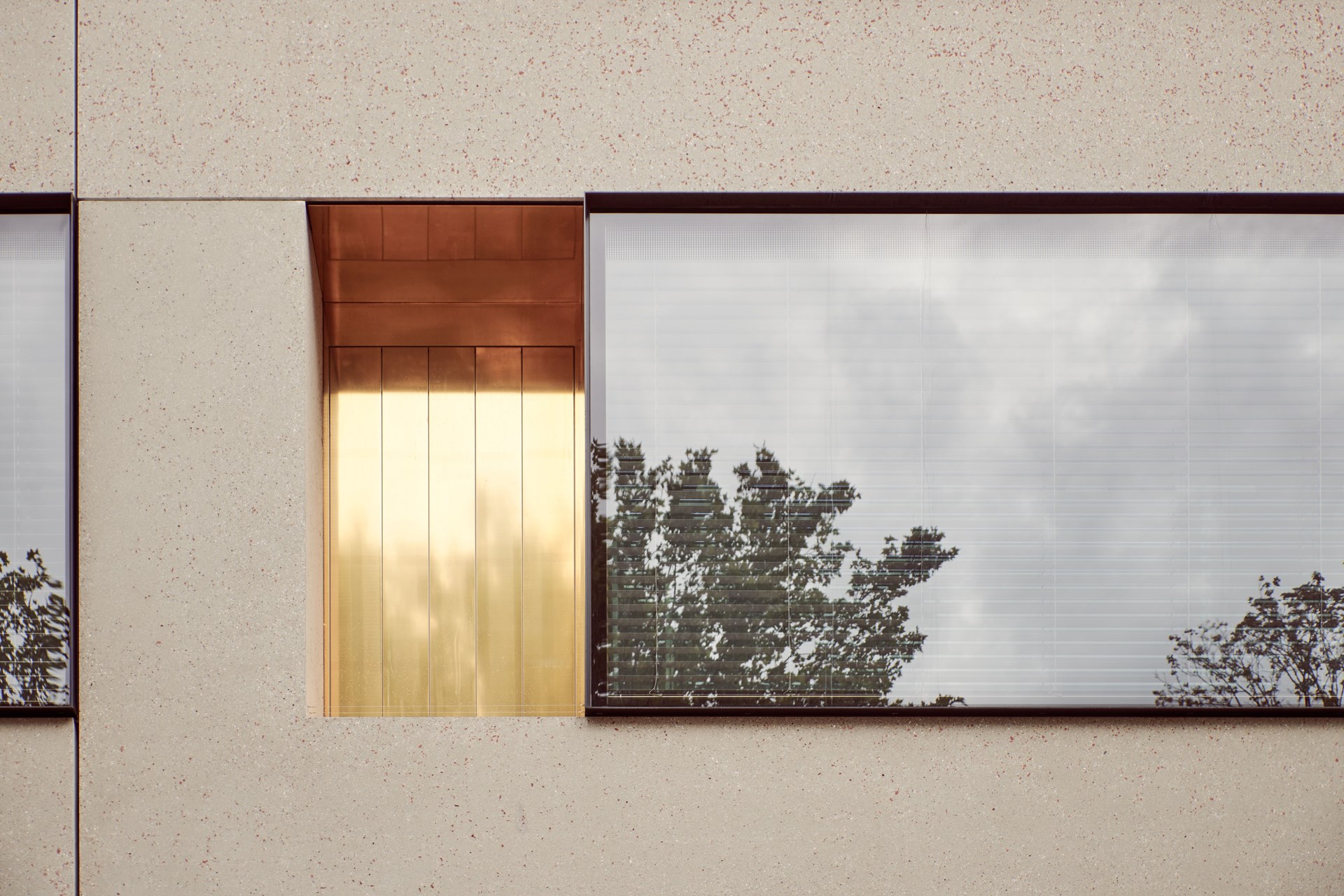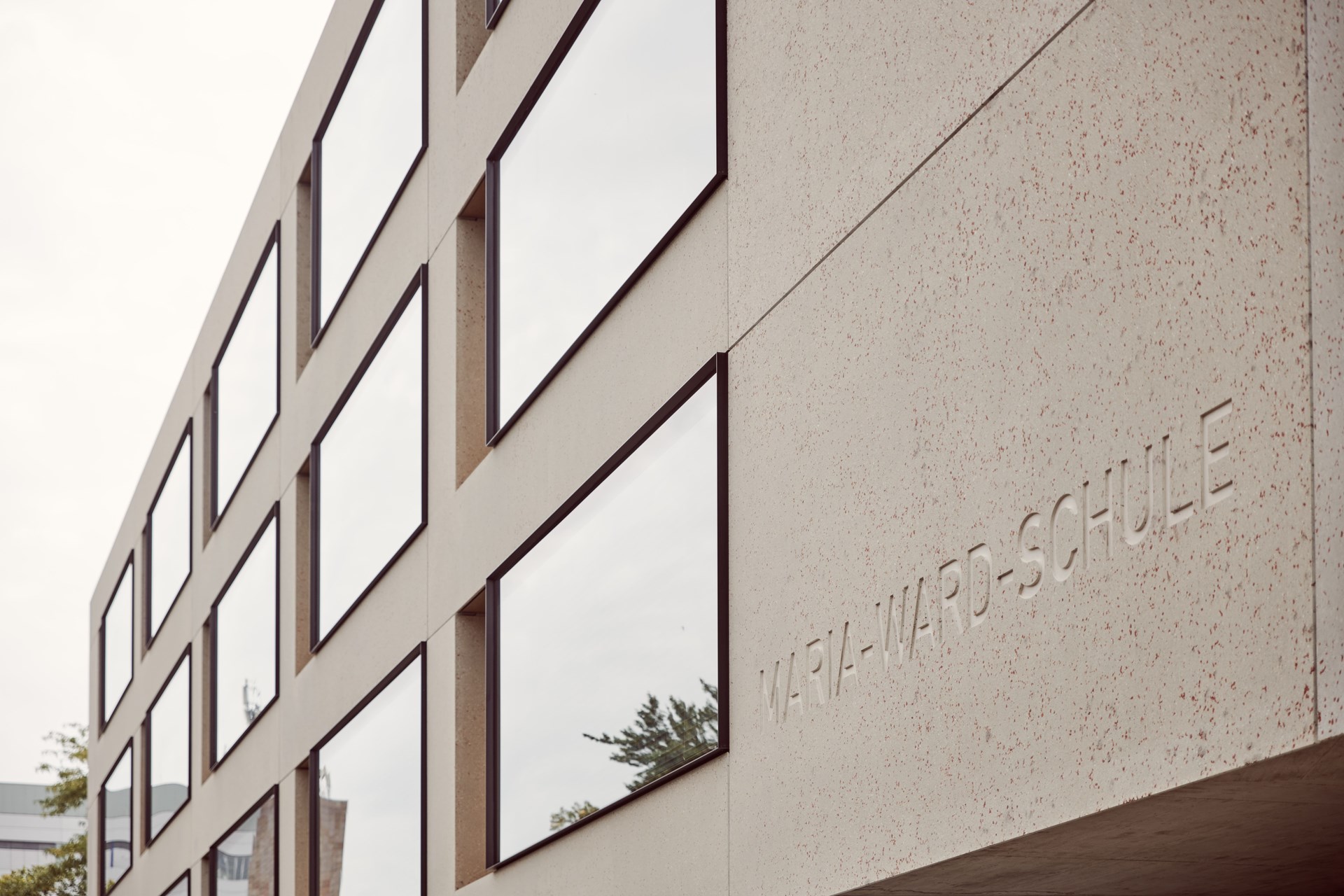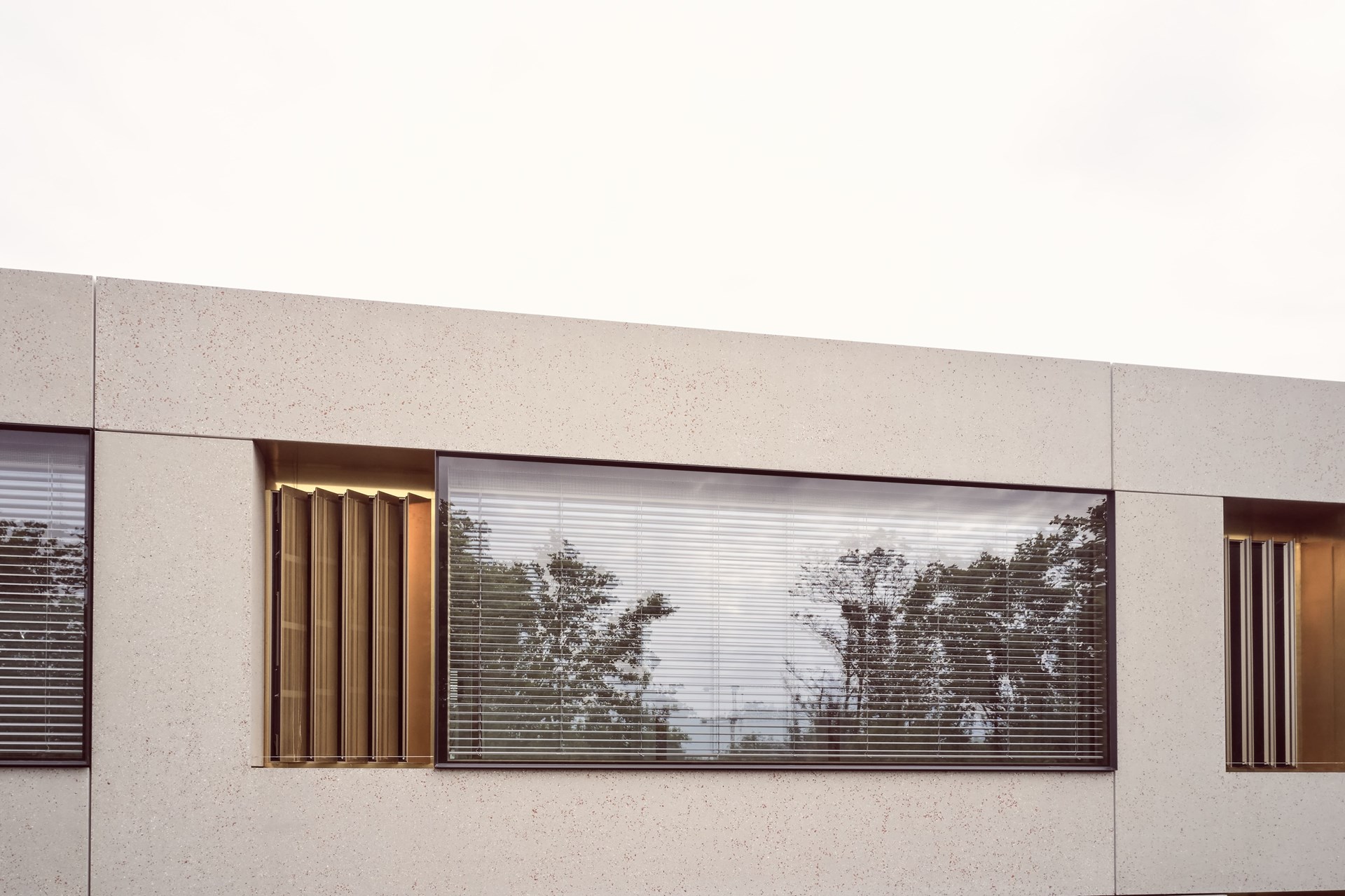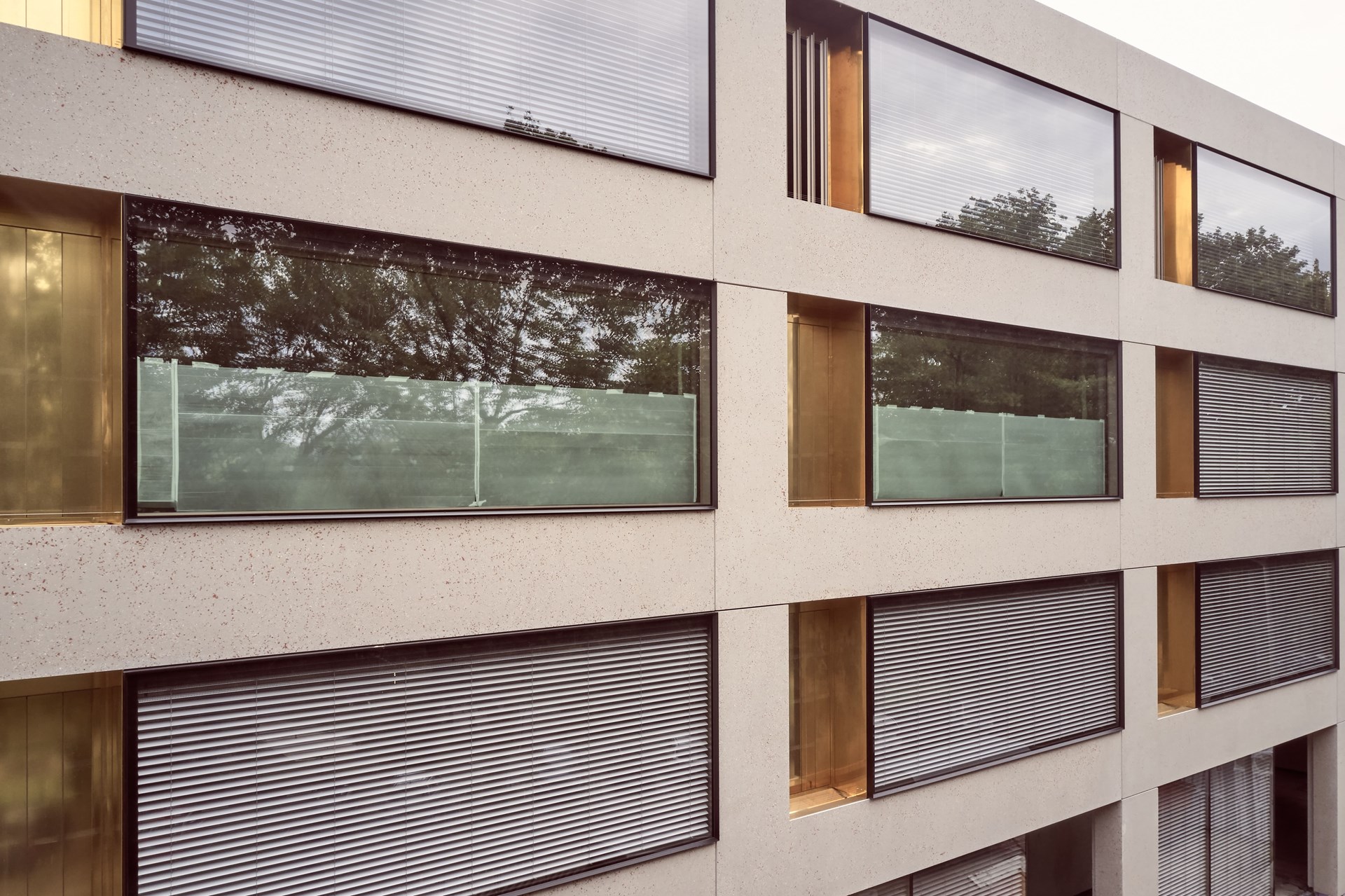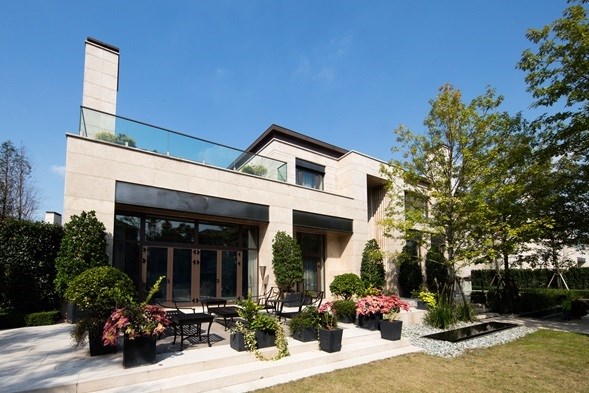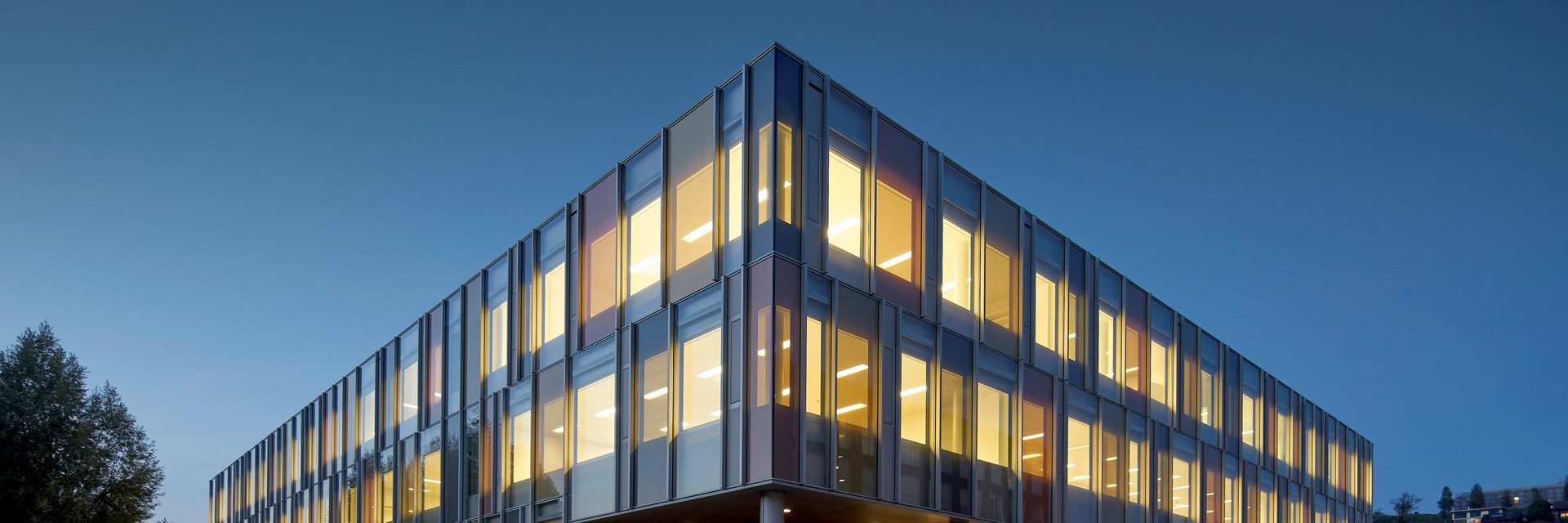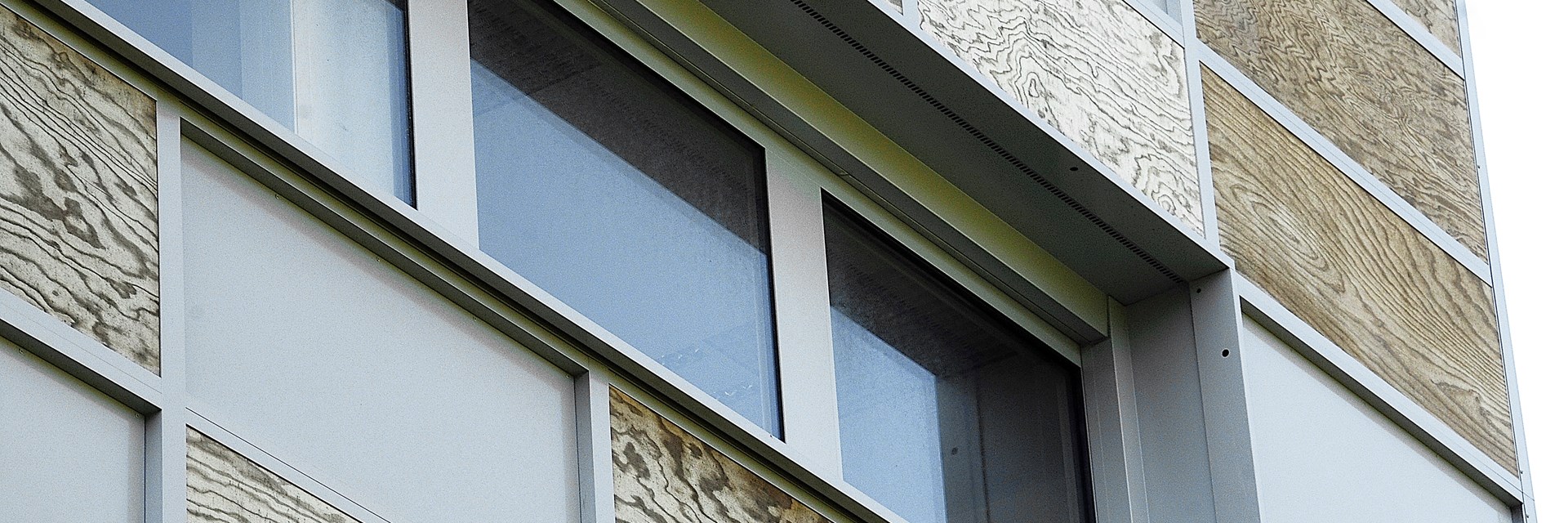DETAILS DU PROJET
A textbook facade solution
WICONA's closed cavity system for a future-proof educational building in Nuremberg
The city of Nuremberg recently saw the creation of what is probably one of Europe's most modern school buildings, based on architectural plans drawn up by H2M Architekten (Kulmbach). The new building for the Maria-Ward schools combines contemporary architecture with maximum functionality, energy efficiency and sustainability. Against this backdrop, the innovative closed cavity facade from WICONA is a genuine highlight.
Harmonious link between the existing and new building
The Maria Ward schools in the Wöhrd district of Nuremberg are steeped in tradition, and since 1992 have been the responsibility of the Archdiocese of Bamberg. The existing building from 1961 was no longer able to meet functional and energy requirements, so officials decided to partially demolish the old building stock, with the subsequent construction of a future-proof new building and extension. This process would involve transforming the all-girls school into a joint learning centre, accommodating a primary school and secondary school facilities in a single location. With this in mind, the designers at H2M Architekten developed a modern building complex for around 110 teachers and 1,300 students. The compact new building has three upper and two basement levels, which integrate harmoniously with the adjoining convent building and the legacy architecture that has been retained and modernised. The new classrooms are organised as a compact structure, directly addressing the nearby urban environment, while the modern triple sports hall stretches over towards Prinzregentenufer, which runs alongside the River Pegnitz. Designer Prof. Stephan Häublein describes an important design element: "We wanted to achieve an interweaving of urban and open space. A good example of this can be seen in the convent square, which was planned as an attractive entrance courtyard. The inner courtyard for the new school building flows smoothly into the playground and has a multifunctional design allowing it to be used as an assembly hall or somewhere to go during breaktime." The new learning centre is rounded off with a spacious canteen and a green roof terrace on the sports facilities.
Future-proof building and energy concept
The sustainable design of the new school building with the aim of CO2 neutrality was a central planning criterion right from the start. Consequently, the building concept incorporates renewable energy, such as solar energy, district heating and uses the mass of the building itself as a source of energy. Sustainability is also reflected in all sorts of ways in the facade. The prefabricated concrete sandwich facade uses recycled concrete and brick materials from the previously demolished old building — an entirely environmentally friendly solution. In addition, WICONA's innovative closed cavity facade solution makes a significant contribution to energy efficiency and sustainable design.
Closed cavity system sets new standards
The idea to use a closed cavity facade evolved even before the bidding process in conjunction with facade designer Petar Reich (a.t.f Petar Reich Martina Walpi GbR). As he explains: "We familiarised ourselves in detail with the new system and worked with the experts at WICONA and the facade engineers at Schindler to develop an individual concept, specifically customised to meet the client's requirements and designed to set new standards both in terms of energy and architecture." On the external facade of the pale, transparent new building, a total of 108 facade elements were installed from the WICTEC air module system (WICONA's closed cavity facade solution) with a width of roughly 6.0 metres and a height of roughly 2.6 metres. For the inner courtyard facade, which covers four storeys, an additional 56 closed cavity elements were used, measuring 2.7 x 3.7 and even up to 4.4 metres. In this special double-skin facade, the profile system accommodates the internal glazing as well as the external frame with outer pane. The result is a cavity that is sealed off from the environment. This is filled with conditioned air at slight overpressure — controlled by a cloud-based monitoring system. Any moisture is thus prevented from penetrating either from outside or inside.
Greater energy efficiency and enhanced user comfort
Likewise protected in the cavity between the panes is the solar protection, designed in the form of a full-length Venetian blind — created as a single unit with what is probably a unique width of almost 6.0 metres. Integrating the blind in the cavity keeps it permanently clean and fully functioning, which significantly reduces maintenance and cleaning costs. Thanks to an intelligent control system, the sun protection can be adjusted to meet individual user requirements, thus ensuring comfortable temperature control inside at all times along with optimal exploitation of available daylight, effective glare protection and maximum energy efficiency. Room ventilation and building cooling can be achieved simply by using the ventilation flaps that were specially designed for this project and installed alongside the facade elements. These automatically ensure a controlled exchange of air. WICONA project manager and designer Marco Theisinger explains: "With the closed cavity system, heat loss is minimised in winter, and in summer we can also achieve excellent insulation in conjunction with the sun protection system and automated overnight cooling. The system achieves a Ucw value of approx. 0.7 W/(m²K) with a Ug value of 0.6 W/(m2K)." In addition, the chosen facade solution offers outstanding sound insulation, far exceeding the required value of 42 dB. As a result, the closed cavity facade solution offers unbeatable user comfort over its entire lifecycle, with relatively low upkeep costs for the client.
Bespoke development and facade creation
Before the closed cavity facade could be created in the production facilities belonging to facade engineering specialists Schindler, it was necessary to conduct comprehensive testing and to meet stringent quality standards. Georg Fundeis, project manager at Schindler, explains: "Before we began full-scale production, the closed cavity elements were subjected to different testing scenarios over a period of four months at an accredited institute of building physics along with experts from WICONA." The production and quality assurance of the elements then underwent ongoing monitoring in cleanroom conditions as well as a final leak test.
Completion of the facade work on the Maria Ward schools in Nuremberg means we now have a genuine showcase project in terms of educational buildings — architecturally attractive, energy efficient and sustainable.
